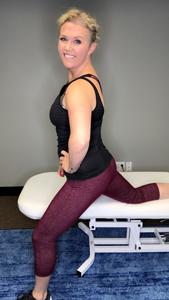Foam roll:
Foam rolling not only loosens tight muscles and releases the fascia that surrounds muscle, it also feels great! Foam rolling contributes to greater flexibility, which decreases the likelihood of lower back injury.
Check out this video for instructions:
Stretch:
Stretch the muscles of your lower body to take pressure off of your lower spine and pelvis.
Quads: Your quads (also called your hip flexors) get super tight if you are sitting all day. You need to stretch them daily, if not more. A great beginner stretch is standing with your knee on a chair or bench and leaning forward into a lunge. An intermediate version involves a deep lunge and for an added bonus you can bring your foot toward your body.Glutes: Also known as your butt muscles J Your three glute muscles along with your piriformis can become very tight and even entrap a nerve. Often glutes actually need to be strengthened, but almost always they need to be stretched. Cross one ankle over the opposite knee and lean forward. Put slight downward pressure on your crossed knee, and think about bringing your chest forward, avoiding rounding your low back.
| EASY | INTERMEDIATE | ADVANCED |
 |
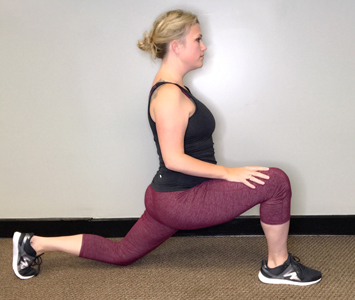 |
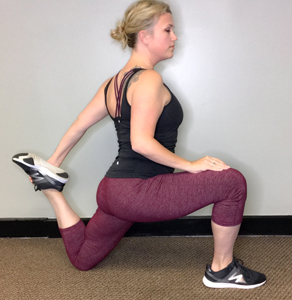 |
Spine: Many people have lost flexibility in their low back over time and need to mobilize the joints and muscles. If you have done yoga, you have likely done cat and cow poses. Cat involves rounding the back up toward the ceiling, tucking your belly button into your spine and tucking your “tail” (butt), and cow is dropping your belly toward the floor, pushing a big arch into your lower back.
| CAT | COW |
 |
 |
Strengthen:
Focus on strengthening your core and hamstrings, as these muscle groups tend to be weak in people with lower back pain. Here are two exercises to try:
Plank*:
You can do this with toes or knees on the floor, using hands or elbows. Keep your body in a straight line – don’t let your butt press up into the air or your tummy dip down. Keep your head and neck neutral. Make it a goal to hold this position for 30 seconds, and then increase.
*If you are pregnant or recently postpartum, planks are not for you! Focus on hip raises/bridges, bird dogs, dead bugs, and kegels.
| CORRECT PLANK | CORRECT PLANK |
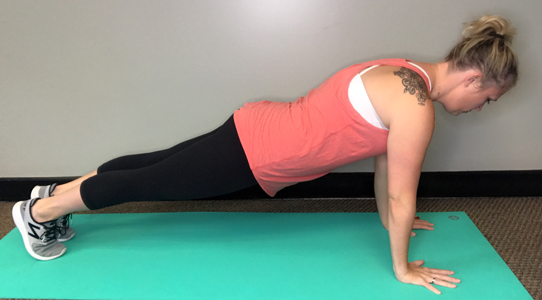 |
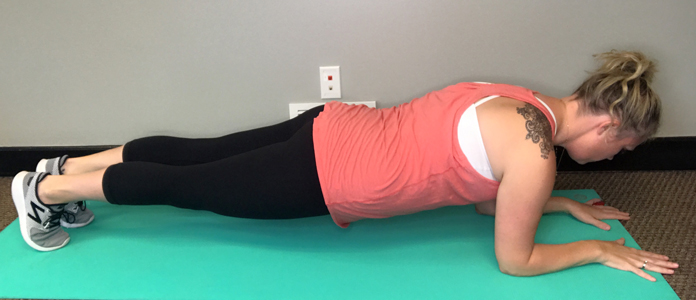 |
| INCORRECT PLANK | INCORRECT PLANK | |
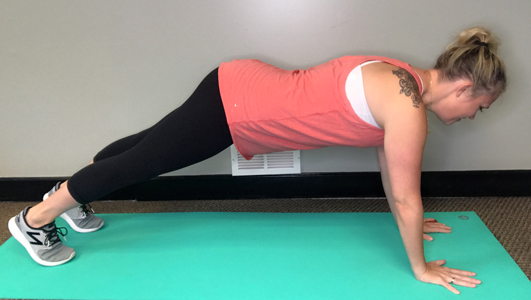 |
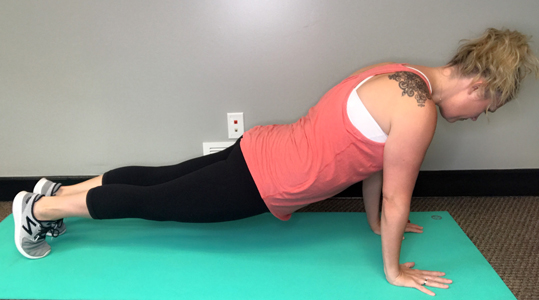 |
Deadlift:
If you are new to this exercise, use bodyweight only for this exercise! Start in a standing position. Slowly bend toward the floor, running the palms of your hands over the tops of your thighs, knees , and then straight down. Reverse the motion when coming up. It is critical to keep a neutral spine when doing this, don’t round your back on the way down. Start with two sets of ten on your first day – you will probably feel these the next morning.
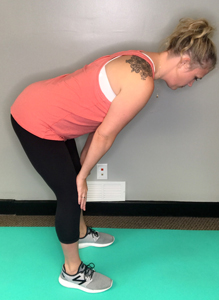 |
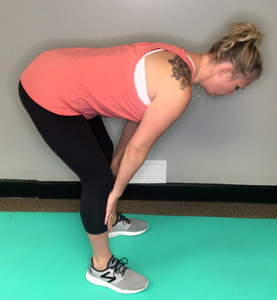 |
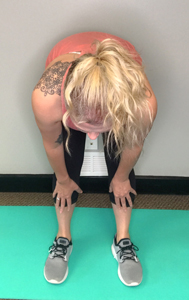 |
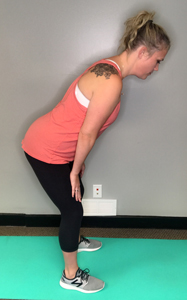 |

